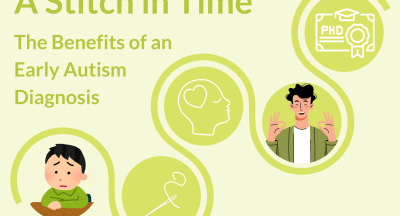
02/06/2020
by Dr Judy Eaton
Blog, Autism, Child and Young Person, Online Autism assessments, Parenting related
0 comments
Last updated: 22nd July 2022
Like many clinical teams who have traditionally been involved in face to face interaction with people, the last two months have been a challenge for us. Factoring in this alongside lockdown and restrictions on travel have meant we have needed to work quickly to find new ways of supporting families.
We have also seen a rise in the number of parents who have approached us because their child has withdrawn completely from everyday life, and where their local CAMHS teams have discharged them, either because they too are unable to carry out face to face work, or because the young person has simply refused to engage.
“However, we know that these children have not experienced trauma in the traditional sense.”
This has led us to think and reflect more about the nature of demand avoidance. Several members of our team have been accessing some online training about developmental trauma delivered by the excellent Beacon House team. It has help reinforce the point that much of the behaviour we have seen in children with both autism, and those with the demand avoidant profile, looks very similar to the ways in which children who have experienced trauma react – ‘meltdowns’, fight or flight and the ‘freeze’ (or complete withdrawal and shutdown) response. However, we know that these children have not experienced trauma in the traditional sense. The majority come from stable, loving and caring homes. This then led us to further consider what ‘trauma’ actually is. As the autistic academic Damian Milton has said, trauma is what the person experiencing an event or situation perceives it to be, not the actual event itself. How much of everyday life, with its demands, its sensory overload, the challenges of being in a school where your needs are not met, could be seen as traumatic for the child experiencing this. What if everyday activities are perceived as a ‘threat’ by your nervous system?
This then led us to think more about the nature of our assessment process. Despite the lockdown, requests for assessments have continued to arrive. In some ways, it could be argued that now more than ever, a comprehensive understanding of a child’s strengths and difficulties is vitally important. Children are slowly returning to school and are having to adapt to big changes. One-to-one support may not be available and the teachers will be forced to take a whole class approach.
This will be confusing and scary for most children, and is causing considerable concern to parents. It is hardly surprising that some children have simply withdrawn into their own safe place and are reluctant to emerge, and in turn face the new ‘normal’.
This is not just the case for autistic children and those with a demand avoidant profile, but it must be harder than for those children with fewer difficulties at the start. Some children and families are likely to need more support than ever.
“We have begun to offer parts of our assessment online, and to our surprise this has worked much better than we had dared hope.”
Obviously, no-one is disputing the fact that face to face assessments are preferable, in many cases, but we have been faced with an unprecedented situation and have had to find ways to continue to offer a service to families who need one. We have begun to offer parts of our assessment online, and to our surprise this has worked much better than we had dared hope. Our standard process required families to bring their children to our Norwich or Henley-in-Arden clinics and to remain there for up to four hours, with the children undergoing a variety of assessments during this time. We knew, from having spoken with families that this sometimes caused extreme anxiety, both for the parents and the children. The stress of having to encourage the child to get ready, to get in the car, to travel a long distance, and then get out of the car and go into a strange building was enormous. Some children outright refused, or attempted to run off. A few were not able to complete all of the assessments. We also knew that even if a ‘meltdown’ (which we consider a trauma response) did not happen immediately, there was every likelihood that it would happen on the journey home.
So what were parents to do? Did they simply not try to get any support or explanation for their child’s challenges, or did they essentially force the child to comply? Neither option is fair or appropriate, but they often felt they were between a rock and a hard place, with nowhere to turn. For these families (and again, we are very aware that this will not suit every family or every situation), being able to access an assessment online has been a lifeline. Interestingly too, with the small number we have piloted, it seems to be easier for some children (especially those with more significant demand avoidance) to join in. When the ‘demand’ is phrased as ‘feel free to join us when you are able’ and ‘you only need to stay as long as you feel you can’, it seems to reduce the anxiety and some children have been able to take part.
“Many test providers have worked hard and very quickly to develop online platforms for delivery.”
We are currently exploring the ways in which we can continue to offer this service. Many test providers have worked hard and very quickly to develop online platforms for delivery. The British Psychological Society has already produced guidelines for clinicians working remotely. It may not be ideal for some, but due to the uncertainty that faces us with regard to whether, or if, there will be a second wave of the virus, or further lockdowns, it makes sense to us to pursue this online approach to assessments. Furthermore, for those families who have found this suits their situation better, it provides an option that was previously denied them.
With all things considered, the wellbeing of the child is our primary concern, and thinking of ‘meltdowns’ and resistance as a fight, flight or freeze response rather than as difficult or challenging behaviour, allows us to more accurately formulate a child’s difficulties, and in turn suggest appropriate support and intervention(s).
Related Posts
The Digital Playground: A Kind Guide to Online Safety for Your Neurodivergent Teen
05/09/2025
Navigate online safety with your neurodivergent teen. Learn to empower them with...
Our current thinking on PDA
31/07/2019
As many people may be aware, there has been a great deal of interest in, and...
Is your child about to move to secondary school?
05/06/2024
As the end of primary school nears, the move to secondary school can be daunting...
A Stitch in Time: the Benefits of an Early Autism Diagnosis
29/08/2024
Read the story of a thriving young autistic person and how early diagnosis and...





